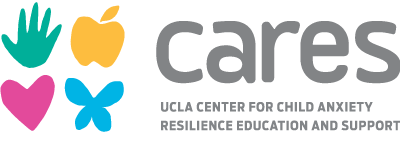Recommended treatment techniques may vary depending on the type and severity of the anxiety, as well as on individual and family factors. There are two primary treatment strategies for anxious youth: cognitive behavioral therapy (CBT) and medication. Mindfulness meditation is another tool often used to help individuals manage anxiety and stress.
- Cognitive Behavioral Therapy (CBT) – CBT is a structured, goal-focused, and time-limited intervention used to treat individuals with anxiety. CBT has been demonstrated to help reduce anxiety symptoms in both adults and children. It can be used alone or in combination with medication and/or mindfulness meditation. CBT involves working with a therapist for approximately 12 to 20 sessions to target specific fears. A major component of treatment is exposure therapy, or approaching feared situations in a graded, step-by-step fashion. This helps the child learn, over time, that they can tolerate feeling anxious. These exposures are conducted during the clinic session and are assigned weekly for at-home practice. Other components of CBT involve learning strategies to cope with anxious feelings and thoughts, challenging negative thoughts, and learning to relax one’s body when feeling physically stressed or anxious. Parental involvement in CBT may vary depending on age, development, and the type of anxiety.
- Medication – Medication is widely used to treat anxiety symptoms, often in combination with CBT. The medications shown in research studies to be most effective for both adult and child anxiety are Selective Serotonin Reuptake Inhibitors (SSRIs). Each child is different, and the type, dose, or necessity of medication will vary based on the physician’s assessment.
- Mindfulness Meditation – Mindfulness meditation can be an important component of any treatment for mental health difficulties like anxiety. This practice involves learning to focus on present-moment experiences, and observing thoughts, feelings, and bodily sensations without judgment. The ultimate goal is not to eliminate distressing emotions or thoughts altogether, but to change one’s reaction to difficult emotions and anxious thoughts.
